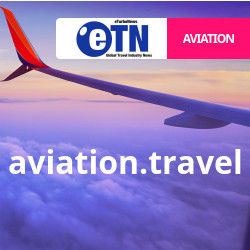Vietjet Aviation Joint Stock Company has maintained its strong growth through the third quarter of 2018. The airline’s high-flying yields come despite the fact that aviation and tourism industries typically experience a dip in September.
Vietjet’s revenue in Q3 stood at approximately HKD4.3 billion (US$545.6 million), an increase of 105% year-on-year thanks to strong revenue from air transport, ancillary and sale & leaseback operations. Total profit before tax in Q3 reached HKD600 million (US$73.3 million), a 59% year-on-year increase.
Thanks to the adding of new aircraft to Vietjet’s growing and modern fleet, the opening of new international routes, and its flexible seat capacity management during low season, Vietjet’s air transport revenue in this quarter reached HKD3 billion (US$382 million), a 45% year-on-year increase while load factor during Q3 stood at approximately 89%.
The new-age carrier also recorded Q3 air transport profits after tax of HKD400 million (US$46.97 million), equivalent to 111% the same period last year. Ancillary products and services also grew dramatically with HKD730 million (US$93.3 million) revenue, a 55% year-on-year increase.
By operating flights with Airbus’ newest A320/A321 neo aircraft, Vietjet saves up to 16% on fuel costs. While expanding its international flight network, the airline is further buoyed by the fuel prices in foreign markets, which are around 30% lower than domestic prices (due to tax and fee policies of foreign countries).These have helped Vietjet lower its cost per available seat kilometer (CASK) ratio (including fuel costs). Advanced programs in operations will further save operation costs (excluding fuel) by around 5%.
During Q3, Vietjet received three more new aircraft and from now until the end of 2018 boasts a fleet of 65.
During the nine months of 2018, Vietjet continued to outperform other carriers in Vietnam with the strongest growth in the total number of flights with 89,690 flights, an increase of nearly 22% year-on-year, transporting 16,882,117 passengers. Accordingly, the airline has maintained its leading position in the domestic air transport market with 45% market share, an increase of 2% year-on-year, while also overseeing a significant international market expansion. Vietjet now has the most flights from Vietnam to Northeast Asian markets, including numerous routes to Japan, South Korea, Taiwan, and China – the highest average revenue region. The airline’s international revenue ratio exceeded 50% of total operation revenue, meaning Vietjet’s growth is ahead of schedule.
Revenue in the first nine months of this year reached nearly HKD11.4 trillion (US$1,455 billion) while profit after tax stood at HKD1.2 billion (US$158 million), up 33% compared to the same period in 2017. Air transport revenue stood at HKD8.6 billion (US$1.09 billion), a 50% year-on-year growth, while air transport profit after tax stood at HKD800 million (US$97.8 million), which is 76% of the target for 2018. When oil prices fluctuated, air transport revenue was not adversely affected thanks to good cost management, including fuel costs. In the past, Vietjet first started to be profitable in 2013 when oil prices were relatively high, US$110 per barrel.
Meanwhile Vietjet’s on-time performance in Q3 stood at 83.5%. The technical reliability rating was recorded at 99.66% with the airline’s flight safety performance and ground operation indicators amongst the top in the region.
Vietjet currently operates 103 routes, including 39 domestic and 64 international routes, covering destinations in Vietnam as well as international destinations in Japan, China, Hong Kong, Singapore, South Korea, Taiwan, Thailand, Myanmar, Malaysia, Cambodia, and other countries.
Construction and equipment installation for the Vietjet Aviation Academy have also been completed with an opening slated for November.
To ensure it operates to the highest international standards, the academy and all of its equipment have been evaluated and approved by the European Aviation Safety Agency (EASA). This is an important milestone for development of Vietjet as the airline looks to modernize education and training, contributing to the future growth of the airline and the aviation industry in Vietnam.
In Q3, Vietjet also attained one of the world’s highest ranking for safety with a seven star assessment from AirlineRatings.com, the world’s best airline safety and product rating review website. “Vietjet Air has become an important part of Vietnam’s way of life bringing affordable fares to many. The airline has a very modern fleet of Airbus aircraft and operationally is now up there with the very best. That is great news for the traveling public and tourists,” said Geoffey Thomas, Editor-in-Chief of AirlineRatings.com.
The impressive growth of Vietjet has also been recognized with numerous awards by prestigious publications such as Forbes, who named the airline one of Vietnam’s top 50 best listed companies and top 40 most valuable brands in 2018. The airline was also acknowledged as one of the top 100 biggest tax payers in Vietnam by the country’s tax authority, and declared a Pioneering Airline at The Guide Awards 2018.
The airline ranked 22nd in a list of the world’s 50 best airlines for finance indicators by Airfinance Journal, the world’s leading magazine in the aviation finance sector, with a better ranking than many prestigious airlines.
On the back of the positive business results in nine months, Vietjet expects to meet its revenue and profit targets for 2018.


